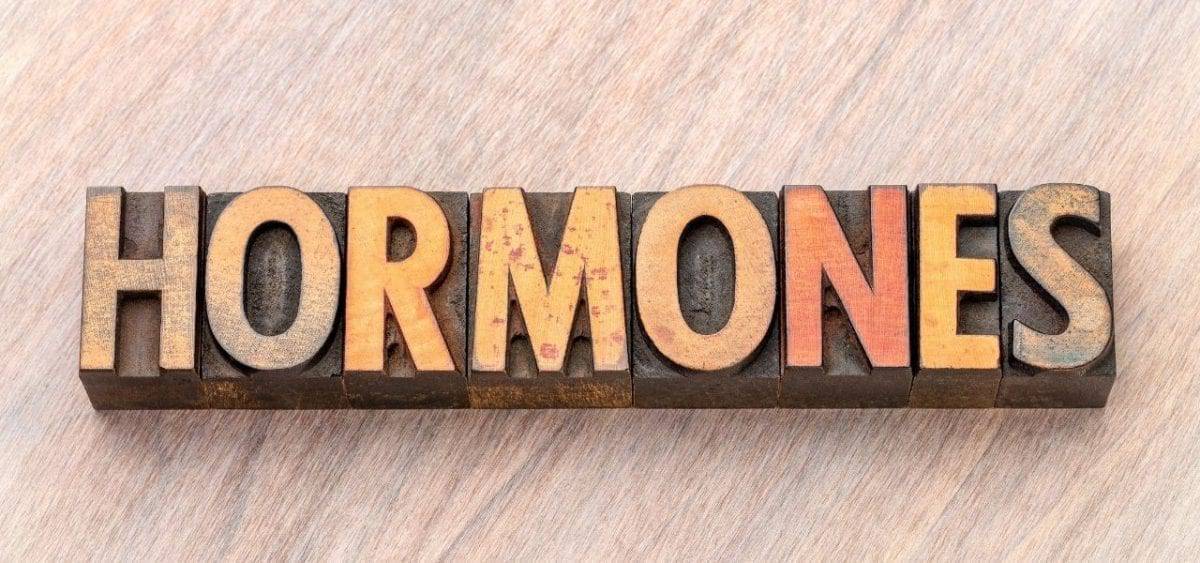Published 16 September 2024
-
Written by Claire Millins

Reviewed by Dr. Abhinav Singh
Fact checking standards
Key takeaways
Please note, this is a repurposed article, based upon 2 articles written by Dr Nicky Keay and first published in the British Journal of Sports Medicine on 8 February 2019 and 28 April 2017.
Did you know that your period is a barometer on how healthy your hormones are? We know that the whole purpose of our menstrual cycle and ovulation is for reproduction purposes, but the carefully and biologically choreographed fluctuations in hormones levels during the 28-day cycle is also crucial to both your health, and athletic performance.
What is the endocrine system?
The endocrine system produces an array of hormones which have effects on a vast range of tissue types and organs, and as a result regulate all the metabolic and physiological processes that happen in the body.
It also has complex dynamics and there are temporal variations in hormonal secretions, both in the long-term during your lifetime, and the short-term such as cortisol which displays a daily rhythm of secretion.
However, the hormones produced don’t work alone. They work as an interactive network and they influence a particular hormone as is determined by the amount circulating throughout your body, and this, in turn is regulated by feedback loops. For example, too much of a particular hormone will have a negative feedback effect, which causes the control system to reduce the amount of that hormone and bring it back into the desired range. Ovulation, on the other hand is a rare example of a process induced by positive hormonal feedback.
This hormone releasing control system also interacts with inputs from other sources, of which the hypothalamus is a key gateway in the neuro-endocrine system. It co-ordinates inputs from many sources to regulate the pituitary gland’s output of major stimulating hormones, including those involved in the menstrual cycle; luteinising hormone (LH) and follicle-stimulating hormone (FSH).
How hormones affect your menstrual cycle
The hypothalamic-pituitary-ovarian axis is one of the most fascinating and complex control systems in the female body.
A key regulator in the synthesis and secretion of LH and FSH is gonadotrophin releasing factor (GnRH), and the variation in size and frequency of its secretion from the hypothalamus is significant in initiating the first occurrence of your menstrual cycle and the subsequent and distinct cyclical patterns of oestrogen and progesterone.
How the levels of oestrogen and progesterone affect athletic performance
Hormones drive our ability to exercise, and oestrogen and progesterone are key to this.
They play a role in bone strength, cardiovascular health, optimal lipid profile and the production of neurotransmitters to regulate moods.
The effects of low levels of both of these hormones, specifically when we hit menopause is well documented. Menopausal women may experience loss in bone mass, have an increased risk of osteoporosis, bone fractures and cardiovascular disease.
Any disruption in hormone secretion can impair athletic performance and have potential long-term adverse health risks, especially in female athletes where relative energy deficiency in sport (RED-S) has multi-system effects such as low bone mineral density and lack of periods.
Lack of periods
Amenorrhoea is the term used to describe the situation when a non-menopausal women has a lack of menstrual cycles, and any form of amenorrhoea needs medical investigation to exclude any underlying medical condition.
The most common medical causes of amenorrhoea are polycystic ovary syndrome (PCOS), prolactinoma (noncancerous tumour of the pituitary gland), thyroid and other endocrine conditions.
Once these conditions have been excluded, your doctor can diagnose functional hypothalamic amenorrhoea (FHA).
FHA has links to three main risk factors: stress, low body weight, and exercise, and is caused by a chronic energy deprivation and low energy availability. It can occur in females of all ages, with the cause usually involving at least two out of the three factors.
RED-S is a situation of low energy availability arising from a mismatch between dietary energy intake, and energy expenditure. A high demand arising from exercising will result in low energy availablity for maintenance of the essential physiological functions throughout the body. This results in the endocrine system shifting into ‘energy saving’ mode, which can be harmful to your health and hinder any improvement in athletic performance.
The most obvious clinical sign of RED-S, especially in female dancers and athletes is amenorrhoea as a result of FHA.
The strategy used by doctors to manage all cases of RED-S should be to address the underlying issue of the low energy availability.
the endocrine system, Hormones and contraception
It is our right to choose the form of contraception we want to use. Hormonal contraception provides a convenient method, but as with any medication there are potential side effects, which have to be weighed up against the benefits. The two most common forms of contraception are:
- Combined oral contraceptive pill (COCP)
- Progesterone only contraception
Progesterone-only contraception can be taken orally, via implant or an inter-uterine coil and generally does not produce withdrawal bleeds.
The COCP contains both oestrogen and progesterone to prevent ovulation and produces a withdrawal bleed. This bleed, however, is not a menstrual period, and is driven by external non-physiological hormones.
Taking the COCP removes the barometer on how healthy your hormones are, and this is one of the biggest reasons why the COCP is not recommended in the treatment of FHA because it masks what is actually happening with your internal hormones.
The COCP can also impact other hormone systems that play a role in bone health, especially in young menstruating women.
Because the COCP is taken orally it produces first pass effects on the liver, which include induction of liver enzymes and an increased production in binding proteins for hormones. It’s these binding proteins that reduce the availability of the active form of hormones such as ‘insulin-like growth factor 1’ (IGF-1).
Someone with RED-S already has a low level of active IGF-1, so as well as masking FHA a COCP can further decrease the level of IGF-1 and compound the negative effect on bone health.
The COCP also offers no bone protection on bone mineral density in women with FHA.
Short-term HRT and RED-S
Hormone replacement therapy (HRT) that consists of transdermal physiological oestrogen with cyclic micro-ionised progesterone is thought to be best clinical practice in the treatment of RED-S.
This is because it replaces the physiological amount and form of oestrogen and progesterone, and has been shown to improve bone mineral density.
Choosing HRT, even as a short-term measure to protect bone health whilst the underlying low energy availability is being resolved, always requires careful discussion before reaching a decision.
Global hormonal function can generally be restored by implementing behavioural measures relating to training load, healthy nutrition and recovery. If you want to know more about your endocrine system and the effects your hormones have on your overall wellbeing you can get a blood test and analysis by our very own Dr Nicky Keay here!
Until next time darlings.
Claire
Xx
Disclaimer: This website does not provide medical advice. The information, including but not limited to, text, graphics, images, and other material contained on this website is for informational purposes only. No material on this site is intended to be a substitute for professional medical advice, diagnosis, or treatment. Always seek the advice of your physician or other qualified healthcare provider with any questions you may have regarding a medical condition or treatment and before undertaking a new healthcare regimen, and never disregard professional medical advice or delay in seeking it because of something you have read on this website.
Written by
Claire Millins
Reviewed by

Dr. Abhinav Singh
Dr Singh is the Medical Director of the Indiana Sleep Center. His research and clinical practice focuses on the myriad of sleep.





